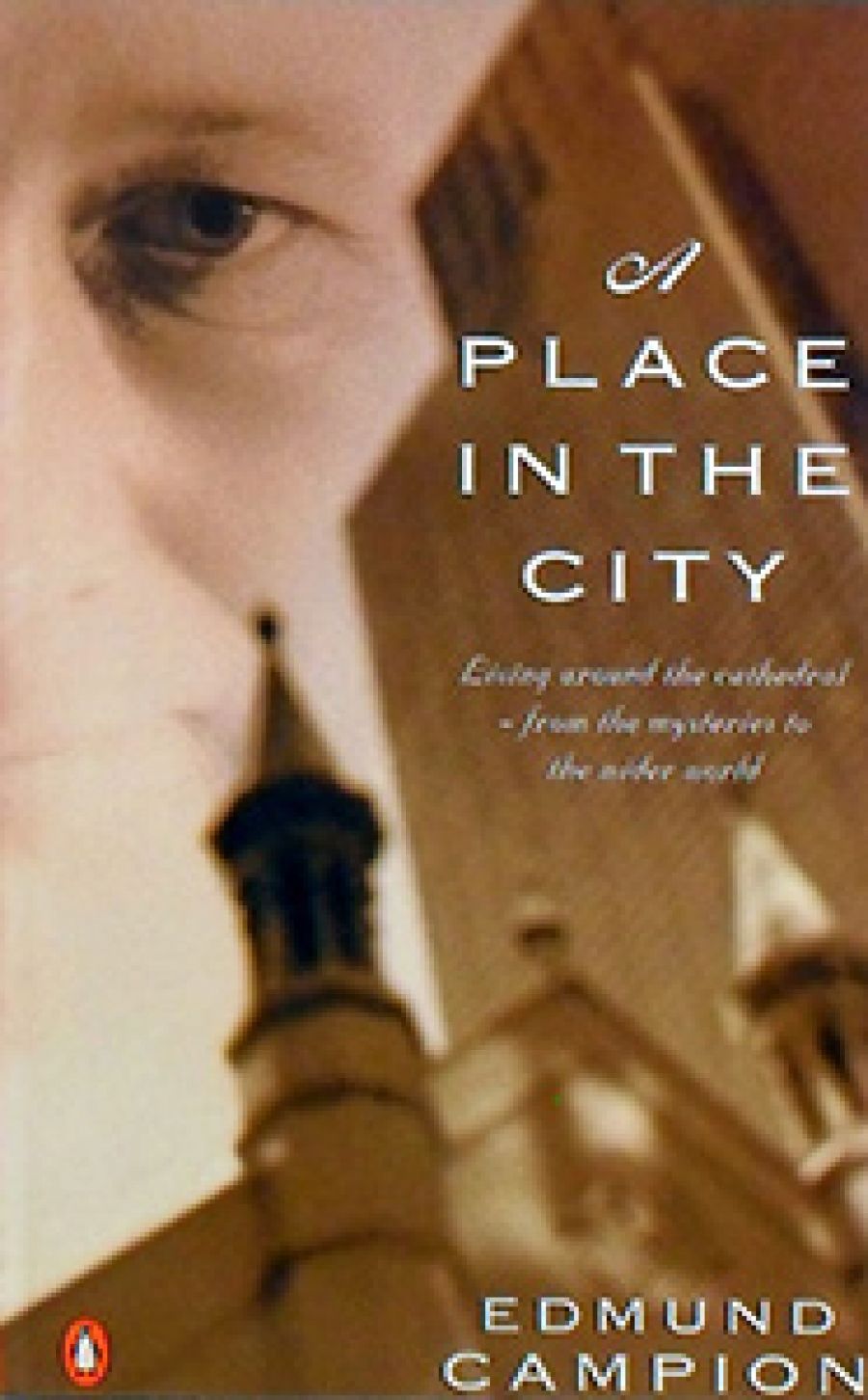
- Free Article: No
- Contents Category: Essay Collection
- Review Article: Yes
- Article Title: Catholic byways
- Online Only: No
- Custom Highlight Text:
The ‘place in the city’ of Fr Edmund Campion’s latest pilgrimage into Australian Catholic life and history is St Mary’s cathedral, Sydney. Campion spent six years here as a young-priest working in the shadow of both the cathedral and the august Normal Cardinal Gilroy.
- Book 1 Title: A Place in the City
- Book 1 Biblio: Penguin, $14.95 pb
There are many interesting stories here, and Campion tells them with intelligence and grace. Some belong to unnamed people, for whom the most attractive vision of stained glass was not the cathedral windows but sunlight through a bottle of cheap sherry.
The cathedral is a place of ‘crepuscular serenity’, ‘a cosmopolitan centre’, a place in which both the devout and the fallen can experience ‘the church’s sacrality’. Among ‘the cathedral people’ Campion chooses to write about is a journalist who has turned from ink to alcohol for sustenance. Campion tells his story and the story of many others with sharp narrative skills, flashes of humour and an earthy compassion. One moving chapter is devoted to an unnamed woman who faces her death with life and courage.
Campion is equally deft and compelling when he wanders through the byways of Catholic history. He sparrows-up the stories of Caroline Chisholm; Fr Jeremiah O’Flynn, who kicked into early Catholic history uninvited and was soon kicked out by the Protestant masters; Nugent Bull, who fought for Franco; publisher Frank Sheed; Stan Arneil, Burmaa POW diarist; feminist Jean Daly; Catherine Mackerras; Fr Maurice O’Reilly, who befriended Christopher Brennan.
Campion tells the stories of people, some well known, some hardly heard of, bringing them to life compellingly in a way that adds another dimension to Catholic history, which he notes has traditionally been clerical history.
The epigraph for this book is from Yeats: ‘... my glory was l had such friends’. Vincent Buckley ends his memoirs, Cutting Green Hay, with the same words. Campion devotes a chapter to Buckley, who has one reference to Campion, a rather growly one, in the memoirs.
Campion is less convincing in chapters on people like Buckley (which is mainly an account of Buckley’s funeral), James McAuley and Manning Clark. There are two problems. One is that Campion is straining to herd some of these people through the doors of St Mary’s cathedral. The other is that, even though Campion probably knew these people intimately, his writing about them is distanced, covering ground already dusty from being marched over by many others. He has little to add, except that he was there.
Campion’s thoughts about Catholicism, past, present and future are stimulating. They are also bland and rather safe. He welcomes the changes since Vatican II (including the ‘manlier prayers’), while recognising that some intangible values have been lost. He refers to ‘the contraception imbroglio’ caused by the 1968 papal ruling. But he seems more excited by receiving ‘an inscribed copy’ of Patrick O’Farrell’s history of Australian Catholicism published the same year. We learn of Campion’s belief in O’Farrell’s pivotal importance in ‘Catholic intellectual life’ (a large, Sydney claim), but we don’t know how Campion responds to past and recent papal statements on contraception.
There are many references to women and feminism. Campion wonders what would happen if feminism ‘made a solid impact on religion’ but does not discuss the issue of women priests. For Campion, both ‘to be alive’ and ‘to be human is to be a failure’. This rather soggy aphorism is countered by the belief ‘that a sense of the sacred is part of being human’.
Campion’s assertion of the central place of religious experience carries the subtext of a mild-mannered anti-clericalism, or more precisely, antiepiscopalism. Bishops don’t rise up with haloes clinging to their mitres. One of the most tantalising, well, OK, irritating elements of the book is its references to Cardinal Gilroy. Campion discusses other Sydney archbishops at length. He begins his book invitingly: ‘It wasn’t much fun living in the same house as Cardinal Gilroy.’ There are a few more passing references to Gilroy, and then the dismissive summary; ‘If Norman Gilroy had stayed in the public service he would have ended up running a very efficient post office.’ A cheap shot.
Clearly, Campion didn’t like Gilroy. Neither did I, but perhaps that’s because the only time I met him he was telling me to get the hell out of his archdiocese. I find it strange that Campion chooses to go over old ground with people like McAuley, Buckley and Clark, while refusing to use a unique opportunity to examine an enigmatic man who had an important influence not only on Catholic life but on Australian political life.
For all these qualifications, this is an enjoyable, amiable and informative book. It is difficult not to like the persona of the priest it creates. We learn that Campion dines at Florentino’s, likes an ‘elegant’ bookshop and a good bottle of wine. I would like to know what he thinks of more controversial issues. But there is no doubting his deep ‘sense of the sacred’ and his book could be seen as Dean John Donne in dialogue with some of the clerics from Chaucer and Browning. Faith, wit, piety and a bottle of good red.


Comments powered by CComment